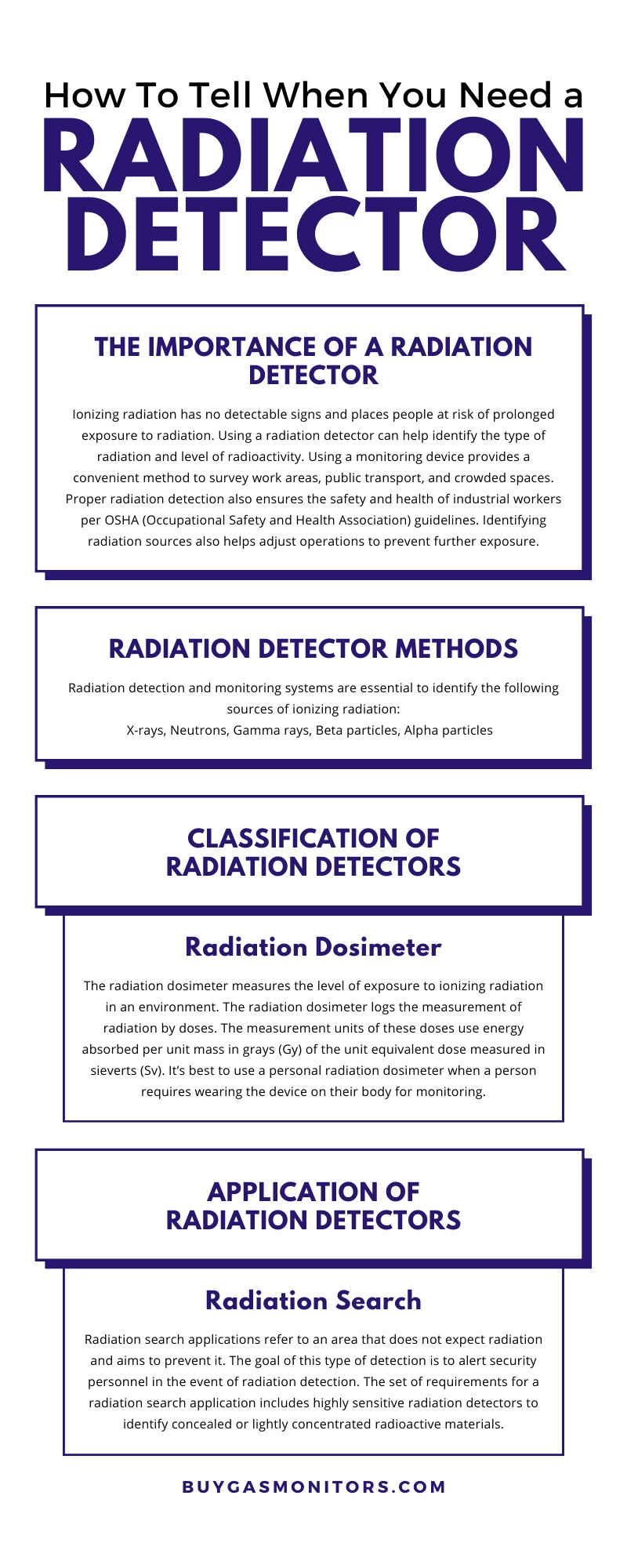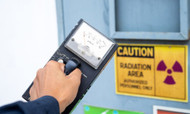How To Tell When You Need a Radiation Detector
Posted by William Kimmell on 8th Jul 2022
The most dangerous aspect of radiation is that it’s undetectable to the human senses. Ionizing radiation deposits energy into the molecules of living organisms. The interaction between molecules and radiation occurs in limited quantities, which means detecting radiation requires the use of an instrument. Radiation detectors contain a two-part system to identify radiation waves.
The first part contains a compound that reacts to radiation exposure. The second part contains a device that converts this reaction into measurable signals. The need for a radiation monitor lies in where you are, and the type of precautions required from elements in a specific atmosphere. The types of radiation detector applications can be placed into three categories of search, protection, and measurement. Learn how to tell when you need a radiation detector by exploring the varying instrumental purposes and which settings require radiation detection applications.
The Importance of a Radiation Detector
Ionizing radiation has no detectable signs and places people at risk of prolonged exposure to radiation. Using a radiation detector can help identify the type of radiation and level of radioactivity. Using a monitoring device provides a convenient method to survey work areas, public transport, and crowded spaces. Proper radiation detection also ensures the safety and health of industrial workers per OSHA (Occupational Safety and Health Association) guidelines. Identifying radiation sources also helps adjust operations to prevent further exposure.
It’s important to recognize the common elements of radiation sources to help identify when to use a radiation detector. For example, the following settings have common attributes that require radiation detection:
- Industrial plants: Industrial and nuclear power plant workers require frequent monitoring to limit their exposure to ionizing radiation. Sources that accumulate metal materials also place facilities at risk of radiation sources found in scrap metal.
- Crowded events: Public transportation, sporting events, and holiday crowds require security personnel to wear portable radiation detectors to identify radioactive substances, such as nuclear weapons or bombs, during crowded events.
- Medical facilities: Medical professionals who work in nuclear medicine provide a specialized area of radiology that uses radioactive substances to treat health conditions. Medical facilities that specialize in nuclear medicine require ongoing monitoring to protect employees from exposure to radioactive material.
Radiation Detector Methods
Radiation detection and monitoring systems are essential to identify the following sources of ionizing radiation:
- X-rays
- Neutrons
- Gamma rays
- Beta particles
- Alpha particles
The monitoring systems for radiation detectors are classified as direct or indirect methods of detecting ionizing radiation. The type of method used depends on the environment and required application.
The direct detection method operates by absorbing radiation by the source. The direct method provides higher resolution than the indirect method, but the devices are limited in size. A direct detector cannot monitor large portal systems. The indirect detection method relies on a scintillator that converts radiation to visible light to alert the detector. Detectors used in the indirect method vary in size and are easily integrated into various applications requiring personal-sized radiation monitors to larger portal monitors.
Classification of Radiation Detectors
Radiation Dosimeter
The radiation dosimeter measures the level of exposure to ionizing radiation in an environment. The radiation dosimeter logs the measurement of radiation by doses. The measurement units of these doses use energy absorbed per unit mass in grays (Gy) of the unit equivalent dose measured in sieverts (Sv). It’s best to use a personal radiation dosimeter when a person requires wearing the device on their body for monitoring.
Counter Radiation Detector
The counter radiation detector measures the intensity of radiation levels by counts per second (cps). The radiation counter generates a signal by counting the number of interactions between the incident radiation and the volume of the detector. It’s best to use a counter radiation detector when needing to identify the various types of radiation. The most common type of radiation detector is the Geiger-Mueller (GM) tube, or Geiger counter.
Radiation Spectrometer
Radiation spectrometers are devices that measure the spectral power distribution of a radiation source. The radiation spectrometer measures the electromagnetic radiation wavelengths that interact with a substance. Incident electromagnetic radiation can reflect off, absorb by, or transmit through substances for the spectrometer to detect it. It’s best to use a radiation spectrometer when navigating a field site where you need to identify nuclear radiation sources.
Application of Radiation Detectors
Radiation Search
Radiation search applications refer to an area that does not expect radiation and aims to prevent it. The goal of this type of detection is to alert security personnel in the event of radiation detection. The set of requirements for a radiation search application includes highly sensitive radiation detectors to identify concealed or lightly concentrated radioactive materials.
Radiation Protection
Radiation protection applications refer to an area that expects radioactive sources or materials. The goal of this type of detection is to protect occupants by alerting them. A radiation detector provides protection by allowing the wearer to alter their position or behavior to avoid the harmful effects of radiation accordingly.
Radiation Measurement
Radiation measurement tasks refer to an area where there are radioactive materials that require continuous monitoring. The goal of is this type of detection is to maintain consistent awareness through measured signals. These measured signals help bring awareness of the strength of an established radioactive field, the limitations of radioactive areas, and tracking the spread of radioactive contamination. Radiation measurement applications require detectors for high measurement ranges and required modifications for examining specific types of radiation in an atmosphere.
How to tell when you need a radiation detector ultimately depends on the setting you’re in and the detection application that’s compatible with that setting. It’s best to know the common sources of natural and man-made radiation to evaluate which type of radiation detector can provide the most accurate radiological measurement.
It's crucial to practice safety procedures around limiting our radiation exposure through technology and monitoring devices. TG Technical Services is here to provide you with top-quality radiation-detecting technology to improve the health and safety of your environment. Explore our broad range of radiation monitoring devices to control your health by monitoring and limiting your radiation exposure.


